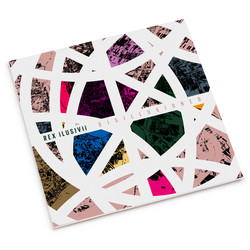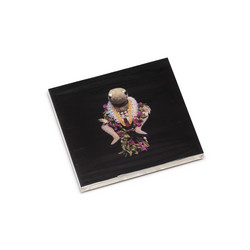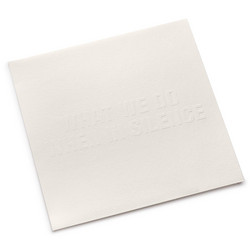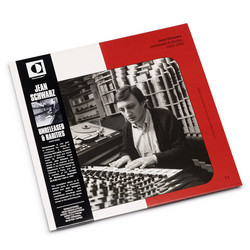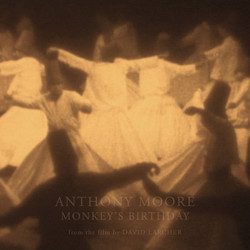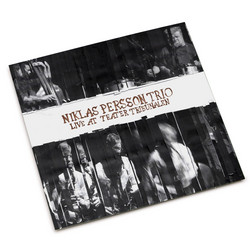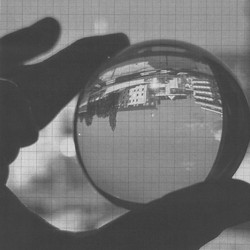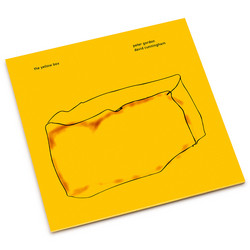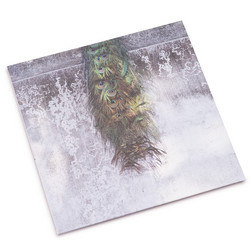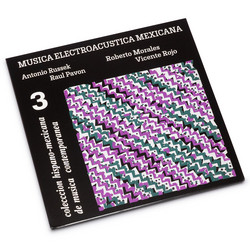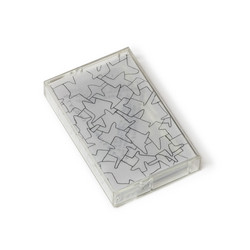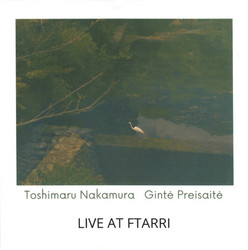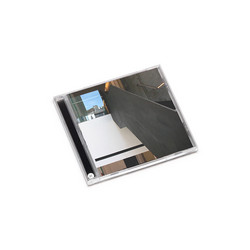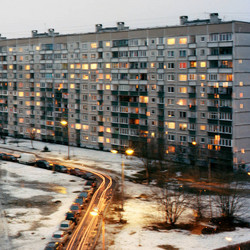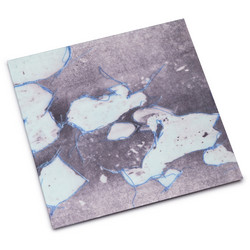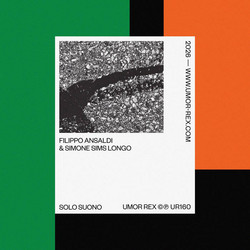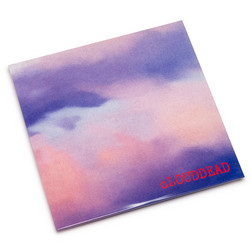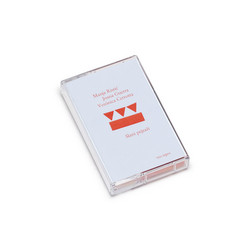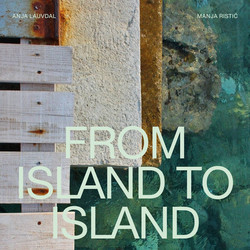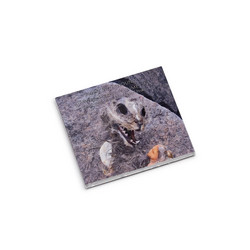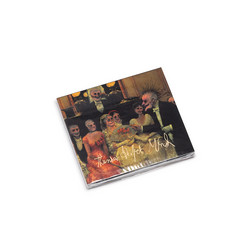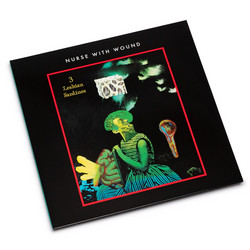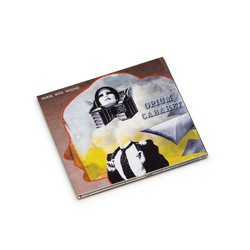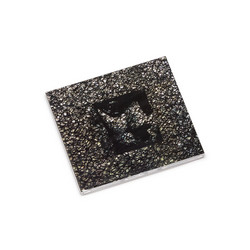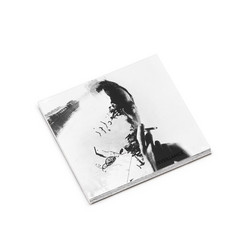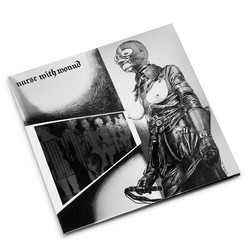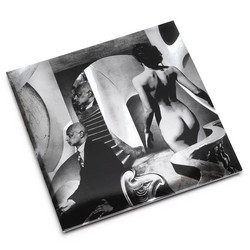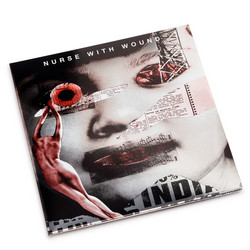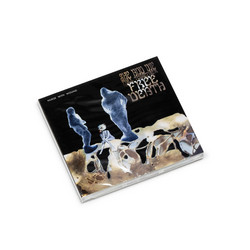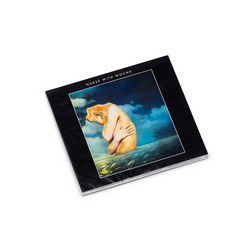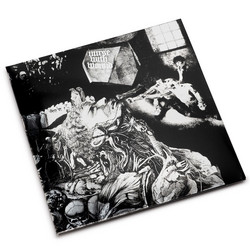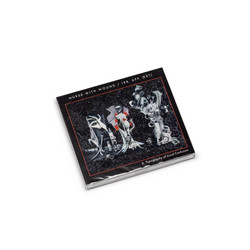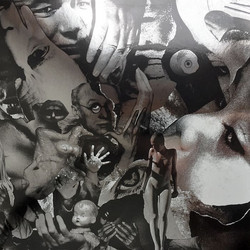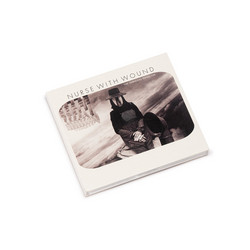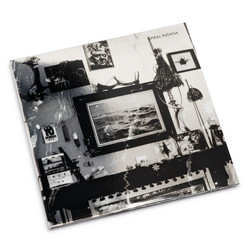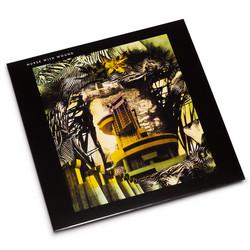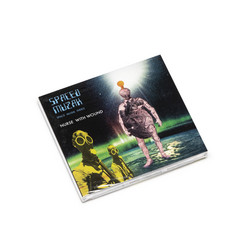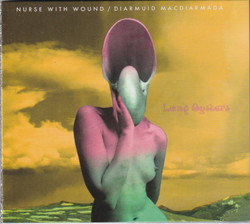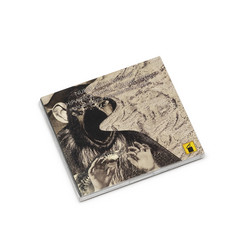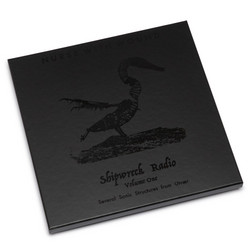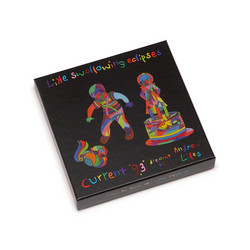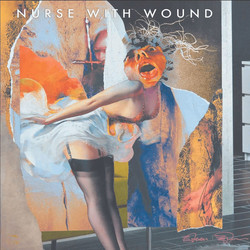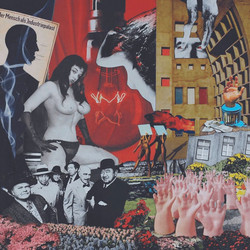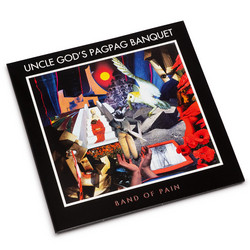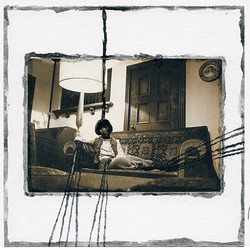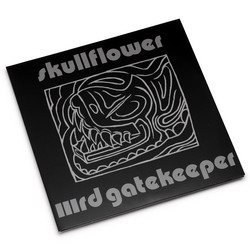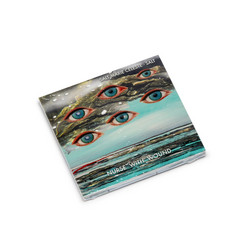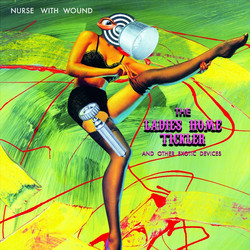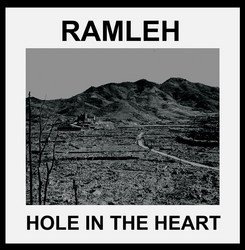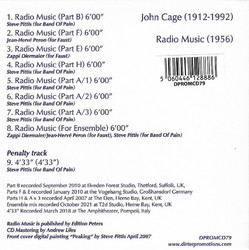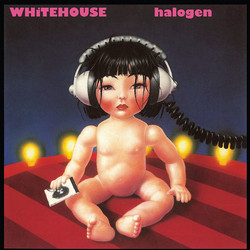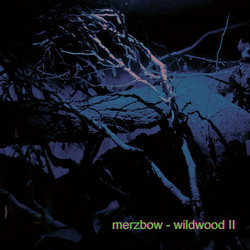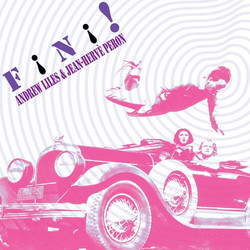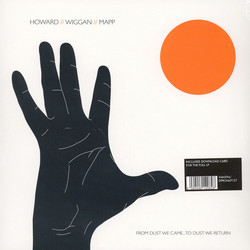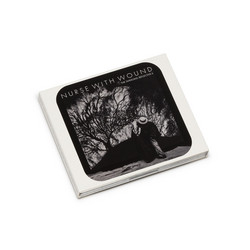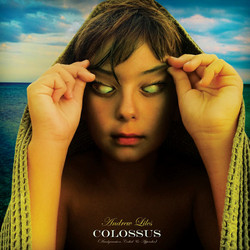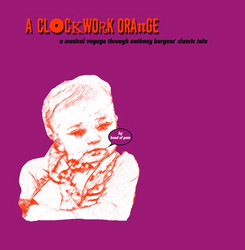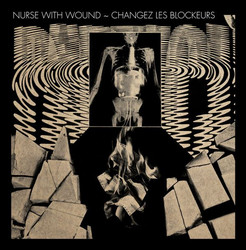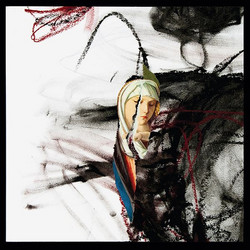A strong case could be made that the vinyl version of Trippin’ Musik is the logical culmination of several conceptual threads that have always driven Steven Stapleton's work, as it combines a lavish visual presentation with a playfully twisted and enigmatic "hall of mirrors" approach to the actual music. It is both an art object and a kind of surrealist game of chance: some songs are weirdly beautiful and immersive, while others are grinding, one-dimensional endurance tests. None of the songs or records are numbered or identified, so the album's sequence is dictated entirely by the choices of the listener (and those choices will unavoidably be blind ones at first). The newly issued CD version, on the other hand, offers a significantly altered and enhanced version of the Trippin’ Musik experience, as there are actual song titles and an ostensible sequence. I definitely appreciate the former and I also quite like the digital format, as using the "shuffle" feature enables probability to dictate the sequence rather than my own vague memories of which colored record I liked the most. I also like the clarity of the digital version, as some of the nuance and detail is definitely lost in the omnipresent crackle and hiss of my record player. The differences between the two formats go much deeper than that, however, as the CD version throws in roughly 35 minutes of new material and excises almost half of the material from the pink record (basically 15 minutes of rhythmic metallic scraping that I definitely do not miss). Consequently, the CD version is considerably more melodic and listenable than its harsher predecessor.
Notably, one of the new pieces (the 20-minute "Or") now opens the album, which dramatically transforms its overall feel and trajectory. "Or" does contain some elements of the now-deleted piece from the pink record though, as it eventually locks into a similarly heaving and metallic pulse. However, it is considerably more compelling in other ways, as it undergoes significant transformation over the course of its journey, slowly building from simmering tension and hallucinatory feedback drift into a massive, churning mindfuck. It is followed by the brief and delightful "The" (plucked from the pink record), which unfolds as warm and bubbling reverie of shivering and shimmering synth-like loops. In classic Stapleton fashion, however, that pleasant interlude ends abruptly to make way for the album's most relentlessly and obsessively sanity-destroying piece ("Fall"), which mercilessly jabbers in a locked-groove style loop for almost 20 punishing minutes. It basically sounds like a room full of shuddering and puttering old engines, but with an uneasy "squirming" element thrown into the cacophony as well. Naturally, that piece ends in jarring and abrupt fashion as well, but it unexpectedly gives way to the surprisingly understated and composed-sounding "Of," which kind of resembles a German Expressionist Horror twist on jazz. It is a truly inspired and disturbing piece, as it feels like it was once something quite melodic but has since been slowed and stretched into a curdled and reverberant abstraction. It calls to mind an imaginary film noir in which the requisite seductive chanteuse is performing in a smoky nightclub, except that everyone and everything is slowly rotting and melting and all the sounds are smearing queasily together.
The second disk also opens with an entirely new piece ("The") and it is another interesting one, as it feels like a considerably less disturbing extension of the previous "Of." Instead of distending and smearing into a phantasmagoric hellscape, however, its foundation of lurching and stammering slow-motion percussion gradually blossoms into a meditative haze of buzzing string drones and gently pulsing, rippling guitar chords. At times, it almost sounds too sun-dappled and benignly psychedelic to be a Nurse With Wound piece, but it also sometimes sounds like a rehearsal tape of Barn Owl/Calexico-style desert rock being played at the wrong speed. The following "Eye" then makes a triumphant return to the "nightmare jazz" aesthetic of "Of," which is the aesthetic niche where Trippin’ Musik truly shines. In fact, "Eye" is easily one of the strongest pieces on the album, unfolding as a spacious and heady swirl of flickering, time-stretched female voices and flanged metallic swells. It evokes the sensation of being lured into a hallucinatory forest of swaying metal trees by some kind of half-malevolent/half-seductive forest nymph, which is a stylistic niche that certainly warrants further exploration.
The remaining two songs seem to the ones from the green vinyl, albeit in remixed and altered form. Both are among the finest pieces on the album, though they take very different directions. For example, "OF" essentially unfolds like a complex and multilayered 20-minute loop, but it is a remarkably hypnotic and absorbing one, as snatches of vocals warble and flutter inside a mechanized, churning pulse that is slightly out of phase. The closing "Sound," on the other hand, actually sounds like the work of a tight, focused, and unexpectedly melodic band. It is quite a lovely piece and is all the more striking for how nuanced, deftly arranged, and purposeful it feels, as it has an actual groove and a lazily burbling and shifting melodic figure. More importantly, it is allowed to run its entire course without being pulled apart, mangled, and dragged into darker, uglier territory.
I would be curious to know what led Stapleton to make the vinyl and CD versions of this album so different, as it genuinely seems like the latter is a punched-up and improved release rather than just the same album with added material thrown in. When I first listened to the vinyl edition, I actually found myself somewhat mystified that this album had taken so long to make, as the pink record just seemed like two abrasive loops stretched out for 20 minutes each. Given Andrew Liles' extreme work ethic, that seems like something that could have been knocked off in a single afternoon. Now that the whole album has been rearranged, enhanced, and re-edited, however, Trippin’ Musik feels like a considerably more coherent and focused statement. In fact, I think it could have been one of NWW's stronger albums if it had been edited even more aggressively than it was, though I imagine the allure of releasing an attention-grabbing triple LP epic was impossible to resist. I certainly was not immune to the appeal of that approach myself and can find plenty to like about both versions of the album. However, Trippin’ Musik could have easily been an album that I absolutely loved if it had been paired down to just “Of,” "Eye," and "OF" (with "Sound" possibly throw in as a chaser). That said, I am about forty years too late if I want to convince Steven Stapleton of the (financially ruinous) merits of being much more selective in what he releases. Embracing imperfection and indulgence is inherently part of being a life-long Nurse With Wound fan, as the occasional rewards are usually worth it. They certainly are in this case, as Trippin’ Musik fitfully shows that Steven Stapleton and his collaborators are just as capable as ever at conjuring up distinctive and radical sound art unlike that of anyone else.
